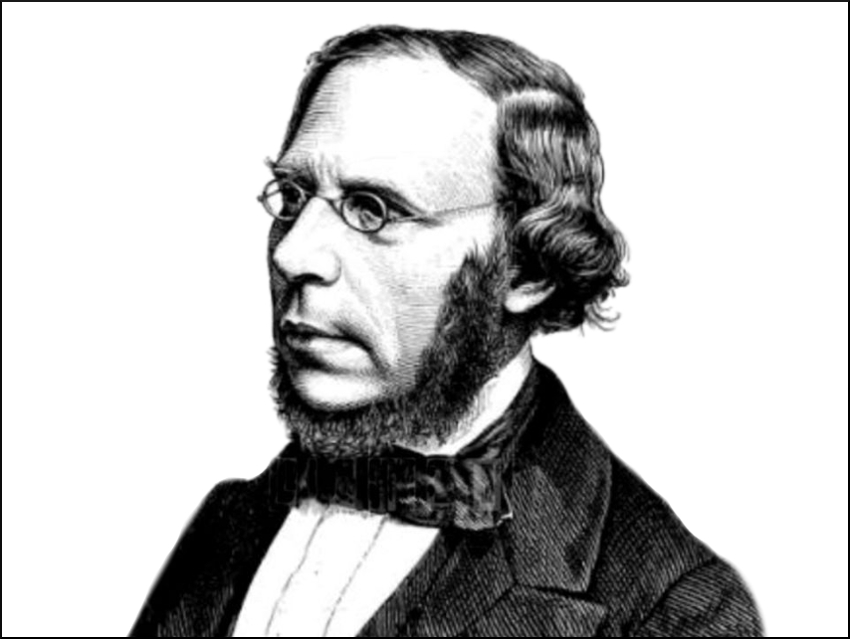Carl Alexander Martius was born on January 19, 1838, in Munich, Germany as the son of the botanist and explorer Carl Friedrich Philipp Martius. He studied chemistry in Munich under Justus von Liebig, the “father of the fertilizer industry”. He then worked as an assistant under August Wilhelm von Hofmann, the first President of the German Chemical Society, in London, UK, and later in Berlin, Germany.
Martius’ research focused on dyes, specifically, aniline dyes. These dyes were made from the constituents of coal tar, a byproduct of coal processing. In 1867, he discovered 2,4-dinitronapht-1-ol, named “Martius yellow” after him. It was the first industrially used naphthalin-based dye. He also developed one of the earliest azo dyes: Bismarck brown, named after the first German chancellor. This dye is still in use in histology for staining biological issues.
Martius and Paul Mendelssohn Bartholdy founded the company Gesellschaft für Anilinfabrikation mbH (“corporation for aniline production”) in Rummelsburg (in today’s Berlin), Germany, in 1867. The company went public and became the Aktiengesellschaft für Anilinfabrikation (Agfa) in 1873. It first produced dyes and stains and later was well known for photographic films and camera equipment. Today, Agfa (now Agfa-Gevaert) offers products and services for printing and medical imaging.
Martius was a founding member of the German Chemical Society in 1867. He also was financially involved in the founding of the Kaiser-Wilhelm-Institute for Chemistry in Dahlem, Berlin, in 1911—a precursor of today’s Max Planck Institutes. In 1903, Martius was ennobled by Prussia, earning the right to be called von Martius. Carl Alexander von Martius died on February 26, 1920, in Bad Reichenhall, Germany.
Carl Alexander Martius is the answer to Guess the Chemist (98).
Sources
- Martius, Carl Alexander von (in German),
Neue Deutsche Biographie 1990, 16, 312. - Sitzung vom 19. April 1920 (in German),
Hr. K. A. Hofmann,
Ber. Dtsch. Chem. Ges. 1920, 53, a72–a99.
https://doi.org/10.1002/cber.19200530525
Selected Publications
- Ueber ein verbessertes Verfahren zur Darstellung des Diazo‐Amidobenzols (in German),
C. A. Martius,
J. prakt. Chem. 1866, 98, 94–96.
https://doi.org/10.1002/prac.18660980121 - Ueber das Amidodiphenylimid, eine neue organische Base (in German),
C. A. Martius P. Griess,
J. prakt. Chem. 1866, 97, 257–264.
https://doi.org/10.1002/prac.18660970134 - Ueber Chloral (in German),
C. A. Martius, P. Mendelssohn‐Bartholdy,
Ber. Dtsch. Chem. Ges. 1869, 2, 353–354.
https://doi.org/10.1002/cber.186900201151 - Ueber isomere Xylidine (in German),
A. W. Hofmann, C. A. Martius,
Ber. Dtsch. Chem. Ges. 1869, 2, 411–412.
https://doi.org/10.1002/cber.186900201178 - Stilbene-Azo Dyes,
C. A. Martius,
US Patent 456628A, 1891.
Also of Interest
- Video: Great Architecture and Chemists in Dahlem,
Vera Köster,
ChemistryViews.org 2018.
Walking tour through Dahlem, one of the richest parts of Berlin and an important historical center for academic research - 125th Anniversary: Death of August Wilhelm von Hofmann,
ChemViews Mag. 2017.
Eminent organic chemist and first President of the German Chemical Society - History of the GDCh,
ChemViews Mag. 2017.
Foundation of the society, history of its journals, divisions, young chemists group, presidents, etc.



